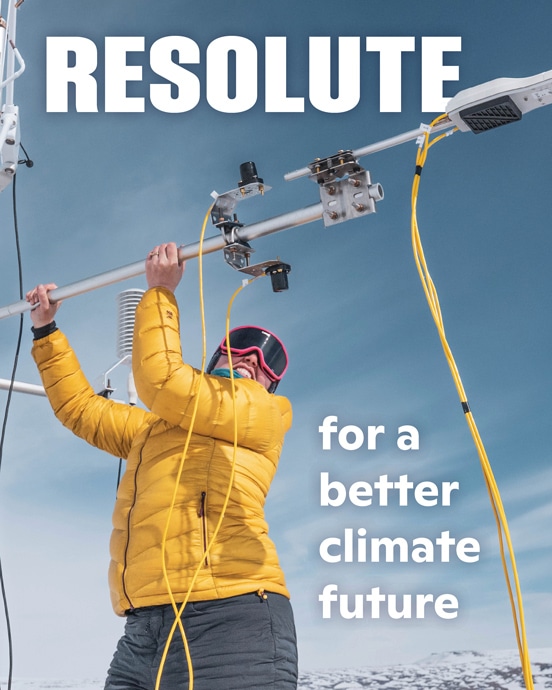Fund for Climate Solutions awards four new grants
New awards leverage unique data and advance carbon markets
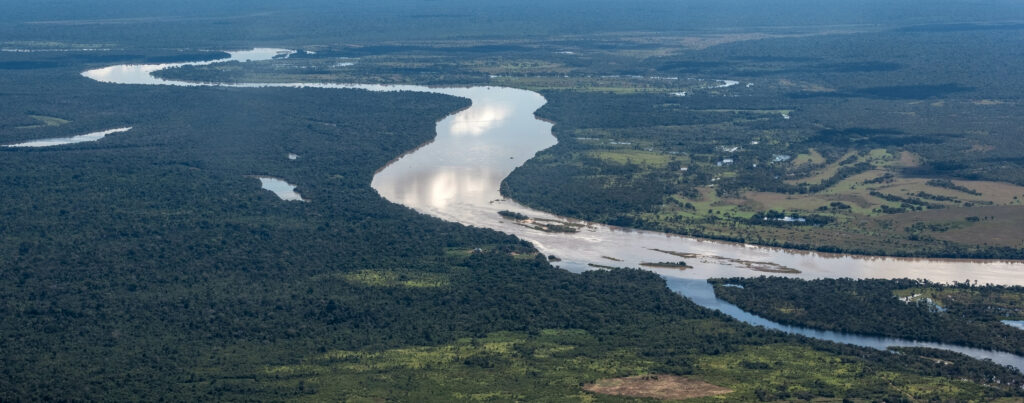
Promoting primary forest conservation as a key NCS strategy in the tropics; helping states enter the global carbon market
Project lead: Michael Coe
Collaborators: Glenn Bush, Wayne Walker, and Joseph Zambo
Standing forests, particularly tropical forests, are capable of providing almost a quarter of the cost-effective climate mitigation needed by 2030, yet they receive less than 3% of available finance. A truly functioning carbon market that could correct this imbalance has yet to develop, and a key reason is the lack of a uniform, global rating standard to guide suppliers, reassure investors, and generally ensure carbon credits are what they claim to be. Other FCS-funded work is underway to develop a Forest Carbon Rating Standard (FCRS). This project will build on that, developing model cases of adoption of the standard by state-level jurisdictions in Mato Grosso, Brazil and Equateur and Tshopo provinces in the Democratic Republic of Congo (DRC). This work has the potential to accelerate capital flows into programs that can keep primary tropical forests standing.
Making NCS work: Improving adoption of climate smart technologies in the DRC by including subsistence farmers technology preferences in the policy design process
Project lead: Glenn Bush
Collaborators: Kathleen Savage, Joseph Zambo, Samantha Bonelli (Woodwell-Tufts student), and Fitalew Taye (Griffiths University)
Climate smart agricultural techniques have an important role to play in avoiding or reducing greenhouse gas emissions while maintaining or enhancing food production and economic development. Previous FCS-funded research showed that System of Rice Intensification (SRI) is a viable climate smart technology for communities in the Democratic Republic of Congo (DRC), with the potential to increase yields by up to 30%. However, to design effective policy to incentivize adoption, we must understand the social and economic trade-offs between business as usual and the novel technology. This project aims to develop a social, cultural, and economic assessment method to understand SRI’s potential for adoption by subsistence farmers in the DRC. While the method will be developed and tested in DRC, it will be broadly applicable, with the potential to inform the design of policies to promote natural climate solutions.
Intensification in the world’s largest agricultural frontier: The impacts of land use transition on local climate and crop yields
Primary Investigator: Ludmila Rattis
The Brazilian Cerrado, the world’s most biodiverse savanna, is key to regulating water availability and atmospheric moisture over South America. It is also where Brazilian agriculture is expanding the most. As a result, more than half the region has been deforested and deforestation continues at a rapid pace, with potential impacts on local temperatures and water availability. The relationship betweenf deforestation and local climate has been well-studied in the Amazon region, but not in the Cerrado. The goal of this project is to model land use transition impacts on local climate and consequently, on crop yields in the Cerrado agricultural frontier. The results will provide new scientific insights into prospects for future food production in the Cerrado and have the potential to greatly strengthen our policy approaches to ending deforestation.
Integrating long-term global rivers data to enhance understanding, identify new research directions, and improve watershed management in a changing climate
Project lead: Marcia Macedo
Collaborators: Michael Coe, Linda Deegan, Anna Liljedahl, Christopher Neill, and Jonathan Sanderman
Climate change is altering river flows, temperatures, and chemistry globally, with impacts on ecosystems and human communities. But the changes vary widely, and there are few comprehensive, global datasets from which to extract a broader perspective. Woodwell’s Water Program is uniquely positioned to address this challenge. Decades of work by Woodwell researchers and their partners at hundreds of sites around the world has resulted in an incredible array of data—global yet detailed, diverse yet comparable. By funding the first Woodwell Climate Postdoctoral Fellowship to analyze this data in an integrated framework, this project aims to expand the diversity of perspectives on Woodwell’s science staff, consolidate our understanding of the threats facing global rivers, and identify cross-cutting research priorities moving forward.
Monitoring Arctic permafrost with satellites, supercomputers, and deep learning
Arctic researchers and remote sensing experts use AI and HPC to characterize large, unexplored parts of the Earth
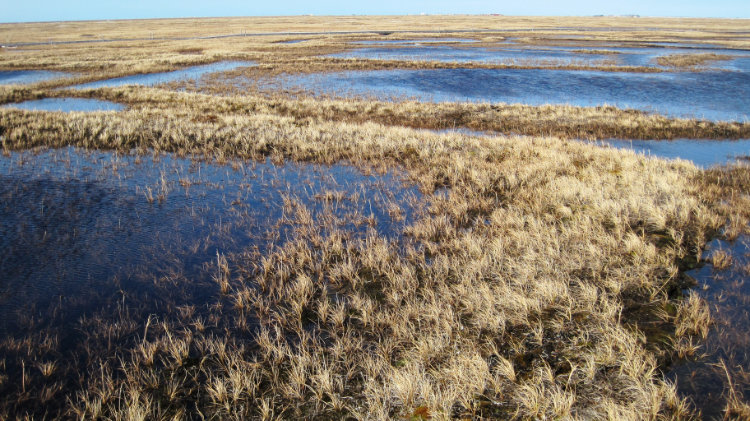
Permafrost — ground that has been permanently frozen for two or more years — makes up a large part of the Earth, around 15% of the Northern Hemisphere.
Permafrost is important for our climate, containing large amounts of biomass stored as methane and carbon dioxide, making tundra soil a carbon sink. However, permafrost’s innate characteristics and changing nature are not broadly understood.
As global warming heats the Earth and causes soil thawing, the permafrost carbon cycle is expected to accelerate and release soil-contained greenhouse gases into the atmosphere, creating a feedback loop that will exacerbate climate change.
Impact alert: Flood insurance comment
In 1968, Congress established the National Flood Insurance Program to cover a critical gap in most standard homeowner insurance. NFIP requires households with federally backed mortgages to purchase flood insurance and enables property owners to obtain premiums at affordable rates. Today, more than 5.5 million homes in the United States are insured by NFIP. Woodwell Climate recently submitted a public comment to the Federal Emergency Management Agency (FEMA) calling for NFIP to address a critical gap in its own coverage—climate change.
While NFIP provides essential protection for high flood-prone areas, it does not adequately account for the fact that climate change is exacerbating flood risk in many regions of the United States. For example, in Decorah, IA and Chelsea, MA, what are currently 100-year rainfall events are on track to become a 1-in-28 and 1-in-34 year events, respectively, by 2050.
The NFIP must meet the rising flood risk facing our country, but the underlying FEMA data that informs the program does not sufficiently account for climate change. While FEMA is pushing forward some improvements, such as Risk Rating 2.0, their Flood Insurance Rate Maps are outdated, do not consider climate change, and have not fully mapped the United States. The maps are used to determine who must purchase flood insurance, resulting in a considerable portion of flooding occurring outside of covered areas.
We greatly appreciated the opportunity to share Woodwell’s science as part of this process. A brief we wrote on the issue and our full public comment is found on our website. Woodwell Climate Research Center is working to ensure that these policies incorporate the latest and best climate science.
Building Flood-Resilient U.S. Communities in the Age of Climate Change
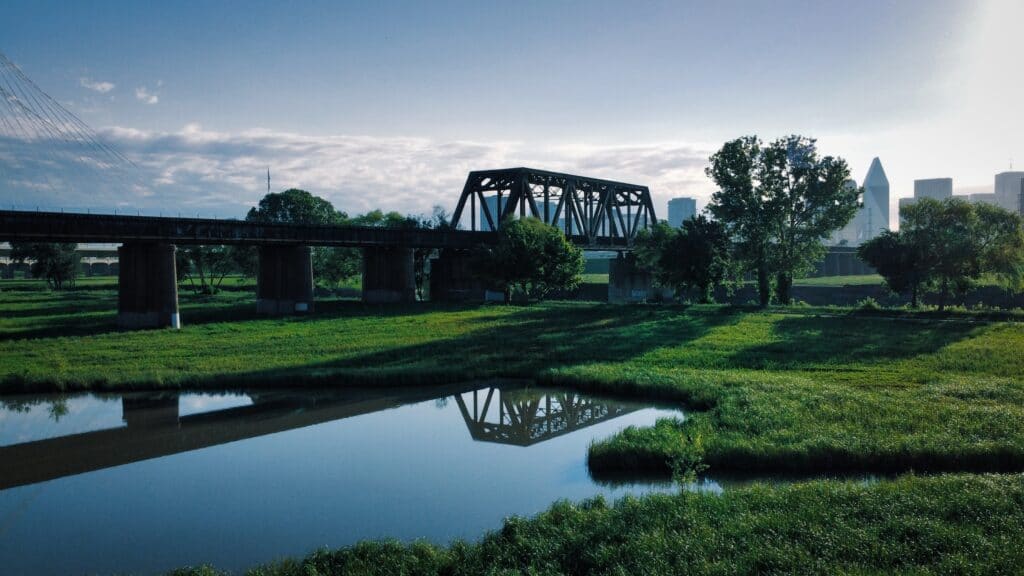
Key Points
- Climate change will exacerbate the risk of flooding across the United States, a hazard that is already the costliest and deadliest natural disaster in the country.
- The National Flood Insurance Program (NFIP), administered by the Federal Emergency Management Agency (FEMA), was created because standard homeowners insurance does not cover flooding. Households in federally-identified floodplains, with federally-backed mortgages, are required to obtain flood insurance.
- FEMA’s floodplain maps, Flood Insurance Rate Maps (FIRMs), will no longer set flood premiums but will continue to define who is required to purchase flood insurance. FIRMs are extremely outdated, do not consider climate change, and have not fully mapped the United States.
- Recently, FEMA asked for public comments on NFIP’s Floodplain Management Standards for Land Management and Use (read our public comments). We outline our three main recommendations for FEMA as well as two recommendations for Congress to better prepare communities across the United States for flood risk.
Download the policy brief pdf.
Climate change may be fueling increase in major Northeast snowstorms
Scientists say the recent surge of intense Northeast winter storms is probably tied to rising ocean temperatures and changes in the Arctic
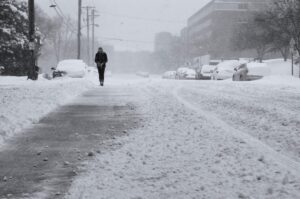
Saturday’s tremendous coastal storm pushed a band of heavy snow into southern New England, burying cities under a snowpack up to two feet deep. These near-record snowfall totals continue an astonishing run of historic storms to impact the Northeast in recent years, probably attributed, in part, to anthropogenic climate change.
Read more on The Washington Post.
If you’re not thinking about the climate impacts of thawing permafrost, (here’s why) you should be
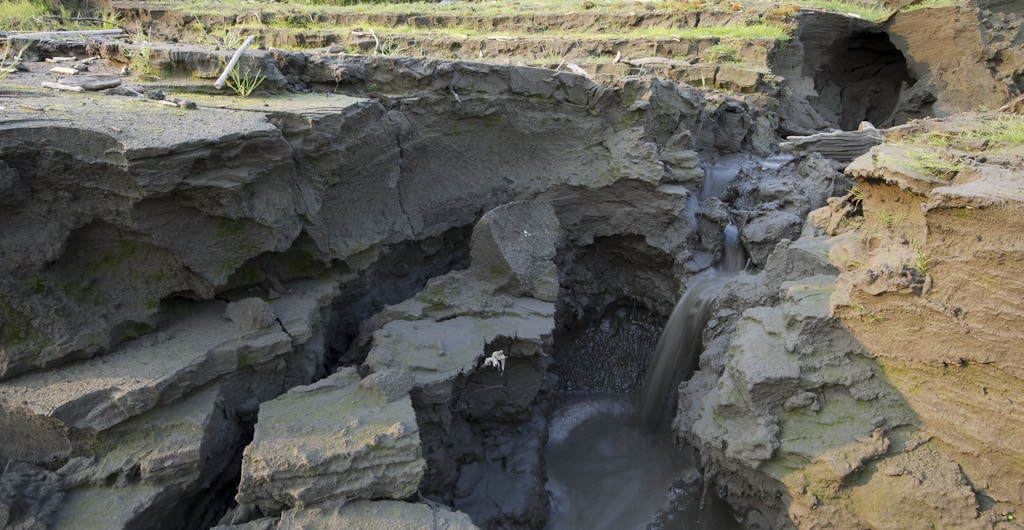
Earth’s permafrost is thawing, and indigenous communities in the Arctic and scientists around the world say it’s high time this alarming loss of ground ice receives the global attention – and dedicated research – it deserves. As this phenomenon reshapes landscapes, displaces whole villages, and disrupts fragile animal habitats; it also threatens to release dangerous microorganisms and potential carbon emissions that have been locked in ice for thousands of years.
Read the UN News article.
Celebrating a well-deserved honor
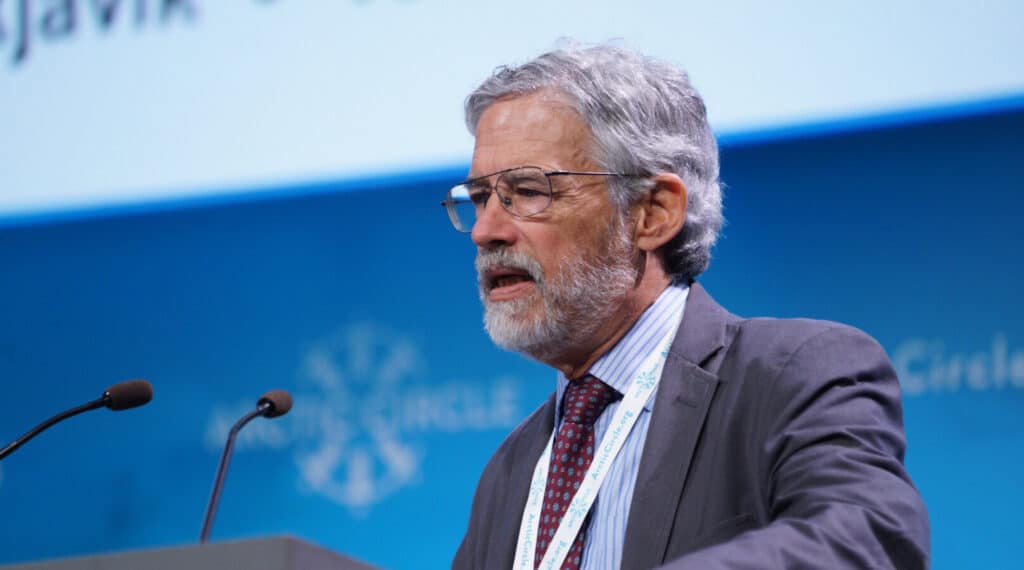
Woodwell’s Dr. John Holdren to receive National Academy of Sciences most prestigious award
The National Academy of Sciences (NAS) announced Wednesday that it will present its 2022 Public Welfare Medal to Dr. John Holdren, president emeritus and senior advisor to the president of Woodwell Climate, in recognition of his long-running service to science, particularly his role as science advisor to former US President Barack Obama. This is the National Academy’s most prestigious award, honoring “extraordinary use of science for the public good.” Previous recipients include Dr. Anthony Fauci, Dr. Norman Borlaug, Bill and Melinda Gates, Alan Alda, and Carl Sagan.
Our most heartfelt congratulations to John. It is a well-deserved honor—the latest in a long list. He holds seven honorary doctorates. He was an early recipient of the MacArthur Fellowships in 1981, chaired the executive committee of the Pugwash Conferences on Science and World Affairs and accepted the Nobel Peace Prize on behalf of the group in 1995, sat on the President’s Council of Advisors on Science and Technology under President Bill Clinton, and served as president of American Association for the Advancement of Science. He holds the distinction of being the longest-serving presidential science advisor since World War II. To name only a few highlights.
The National Academy’s announcement notes that, as President Obama’s science advisor, John “helped coordinate U.S. responses to the H1N1 flu and Ebola outbreaks, the Deepwater Horizon explosion and oil spill, and the Fukushima nuclear disaster.” He was also instrumental in shaping the Obama administration’s Climate Action Plan.
John served as President and Executive Director of Woodwell Climate Research Center (then Woods Hole Research Center) prior to joining the Obama administration. He continues to serve as Senior Advisor to the President of Woodwell Climate, is a research professor in Harvard University’s Kennedy School of Government, and co-directs the Science, Technology, and Public Policy Program in the School’s Belfer Center for Science and International Affairs. The Belfer Center’s Arctic Initiative works in close collaboration with Woodwell’s Arctic Program to elevate policy issues related to ongoing, rapid Arctic change.
Putting science to work for the greater good is Woodwell Climate’s mission, and John exemplifies it. The Public Welfare Medal will be presented on May 1 during the Academy’s 159th annual meeting. We will all be celebrating with John in spirit, if not in person.




